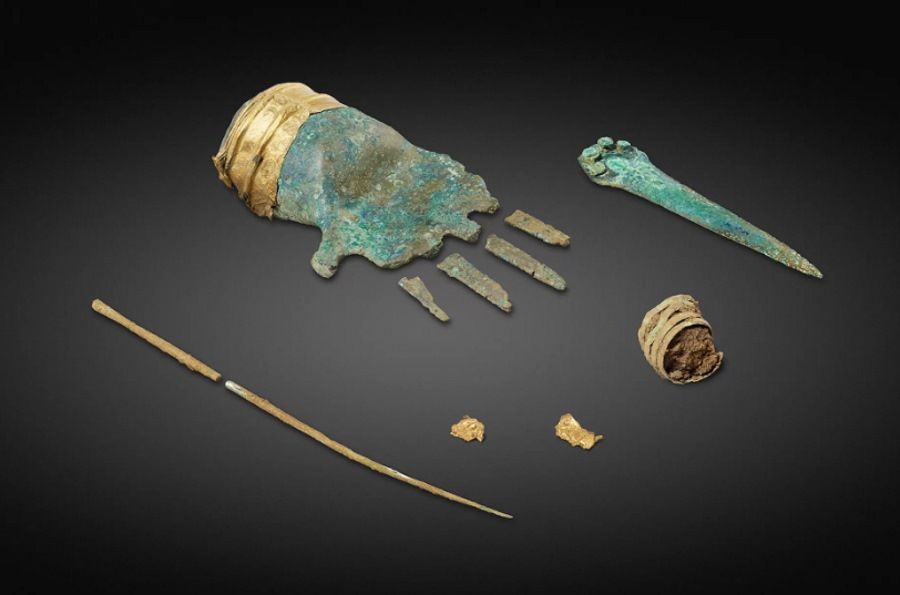Bronze hand from 3,500 years ago found in Switzerland
Swiss archaeologists have come across a bronze hand with a gold cuff that is 3,500 years old. The artifact may have been part of a larger sculpture or used for ritual purposes. Perhaps it was a prosthesis.
Scientists aren’t quite sure what they’re dealing with. They have never seen anything like it. Preliminary findings appear to link the bronze hand to power as a symbol of it, but it is unclear whether it was once part of a larger sculpture or is a stand-alone ornament.
Preliminary radiocarbon dating conducted on the glue used to attach the hand indicated that the hand dates from between 1500 and 1400 p.n.e., This is the Middle Bronze Age in Europe. Dating suggests it is probably the world’s oldest piece of bronze representing a part of the human body. If it is indeed a sculpture, it may even be the oldest bronze sculpture in Europe. Specialists from Switzerland, Germany and France admitted that they did not know the poróof a Bronze Age sculpture from Europe.
The bronze hand is slightly smaller than the natural hand of an adult male. The ancient artisan creating the artifact left a blank space in the part of the hand where the wrist should have been, indicating that this metal hand was once mounted on another object, such as a statue or scepter. SomeóSome researchers have hazarded the thesis that it may have served as a prosthesis.
The hand was found by treasure huntersóArmed with metal detectors near Lake Biel in the Swiss canton of Bern in October 2017. The find was handed over to professionals. Along with a hand to an archaeologistów hit a dagger also made of bronze and a rib bone found along with artifacts.
Intrigued by the find, the researchers traveled to the site of the discovery this spring to see if there were other artifacts buried there from that time period. The trip paid off. This is because the site was found to be a burialówkuku of an adult male, and in it a spiral bronze ornament and tiny pieces of a gold plate, whichóre matched to a bronze hand.
Under the grave for the archaeologistóa surprise awaited. A stone structure was discovered there. The man, probably the owner of the metal hand, appears to have been deliberately placed over the structure, archaeologists noted.
– He must have been a high-profile figure. The gold ornamentation of the hand suggests it is a symbol of power, wyróThe grieving mark of the social elite, even bóstates – said Andrea Schaer, who heads the team of archaeologistsóin investigating the site of an ancient burialówku.
Now the researchers want to know the chemical composition of the hand. It’s supposed to tell them whether it was made in the region or came from a distant place. Afterwards, it will be exhibited in the local museum.
– Such finds remind us how many gaps still exist in our knowledge of the past – said Stefan Hochuli, who is involved in the conservation of the monumentsów.
Sourceósource: National Geographic, Live Science, fot. Philippe Joner/Archaeological Service of the Canton of Bern
